A day on the water in Biscayne National Park
No Comments
I just returned from a trip to Miami. Why did I find myself there in summer again ? The Miami Country Day School (MCDS) is hosting my National Parks travel exhibit in the Sol Taplin Gallery as part of their “Campaign for the Arts” until Oct 10. They invited me to visit for three days to talk with the students, in both large and small groups.

Summer is not my favorite time to be in Florida, but I was intrigued by the prospect of talking with students – I had previously exhibited only in galleries and museums. The new experience did not disappoint. The gallery was beautiful and the hosts extremely gracious. The best was that as I shared my experiences with students of various ages, I was touched by the candid comments they made directly, and rewarded that the photography moved them. Thank you to Jenny Knight, Yvonne Moyer and Jonina Pitchman for making this happen.
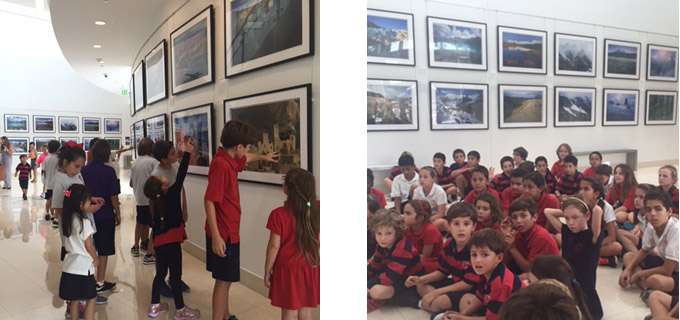
The one thing the Florida summer is favorable for is water activities. No cold fronts and fewer winds normally mean calmer waters and better water visibility. I mentioned to my hosts that I would like to re-visit Biscayne National Park. A concessionaire there provides island transportation to Elliott Key and Boca Chita Key outside of summer, as well as snorkeling trips year-round. However, in September 2013, the park’s concessionaire went out of business overnight and had not been replaced since. The lost of the concessionaire is more problematic than at other parks, because it means that to explore the park besides Convoy Point, you need your own boat. Water occupies 95 percent of the park’s surface area.

(photo at right by Alyssa Larson)
The school put me in touch with the adventurous and kind Larson family, who offered to take me out on the water for a day. Their son, Max, who attends MCDS fifth-grade has already visited more than a third of the national parks! Glenn, who operates a marine construction company knows the area well, and Alyssa (working with 35mm and MF film!) suggested an early departure. They went out of their way to help me, borrowing their friend’s boat – based at a sumptuous mansion in Coral Gables – to shorten the water trip. I am so grateful to them for taking me to areas that I wouldn’t have been able to visit by myself.
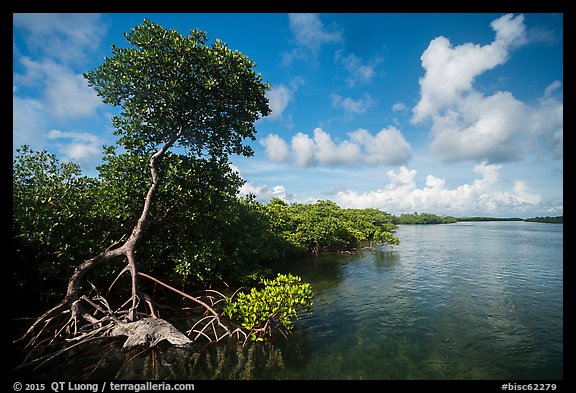
We started at Boca Chita Key, a small island with a picnic area and a harbor popular with boat owners. It is home to the most recognizable landmark in the park, the Boca Chita lighthouse, as well as a few historic buildings.
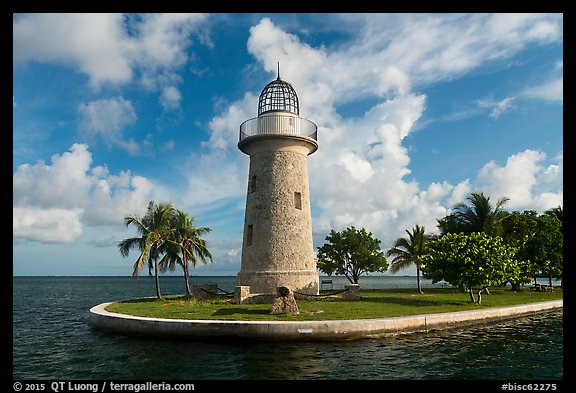
Looking to explore for nature subjects, I was eager to check out the nature trail that circles the island, but since we didn’t bring insect repellent, the others declined to come with me. I found out why when the mosquitoes swarmed me along the trail.
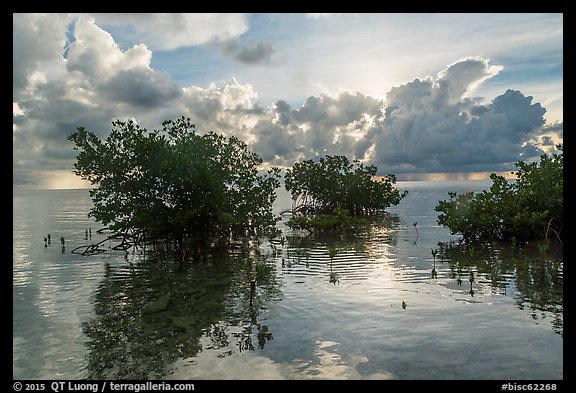
I (very) quickly photographed a few small isolated mangroves east of the campground area, and ran back to the dock, having suffered what felt like hundreds of mosquitoes bites within a quarter of an hour. No more island landings for the day!
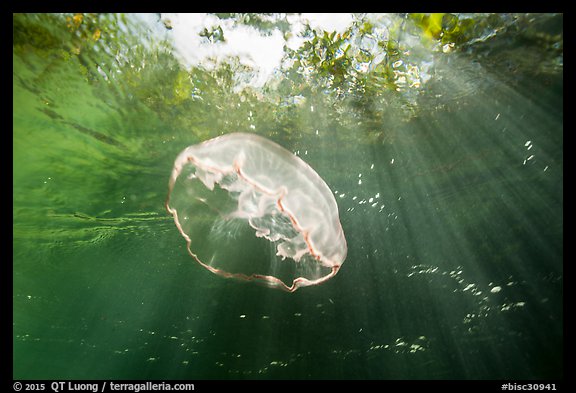
At this time of year the water is normally glassy in the morning, getting breezy mid-day and windy in the afternoon. However, on that day, the wind had already picked up in the morning. After stopping at two reefs where the conditions were poor for underwater photography, we headed back to the keys. The water was also full of jellyfish, which appeared out of nowhere since the visibility was so low. The salt water worked wonders for the mosquito bites, but now it was time to avoid being stung!
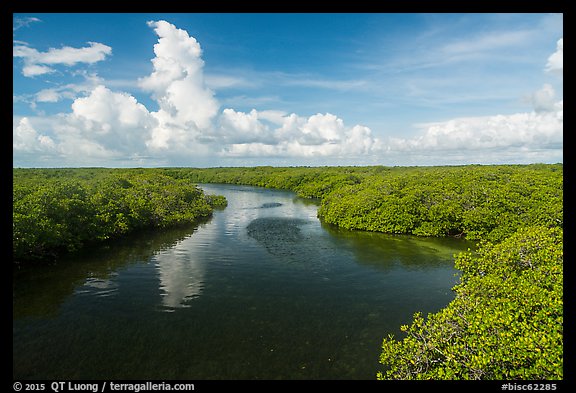
The keys to the north of Biscayne are solid, but those in the south are penetrated by water, in the form of lagoons, channels, and creeks. The concessionaire doesn’t provide transportation to the southern keys, so the area is best explored by private boat. It would have been easy to get disoriented and lost while navigating their maze-like network.
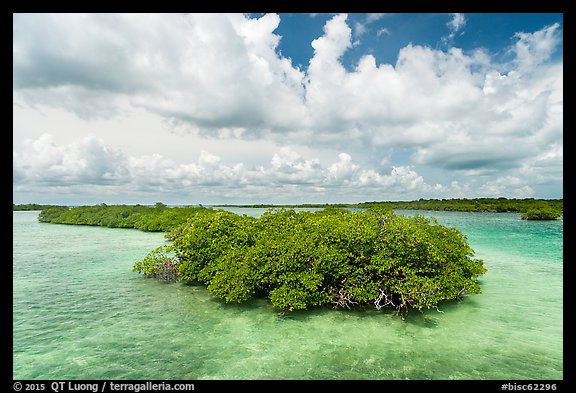
The southern Biscayne keys are an excellent place to explore the mangrove shores. The water was considerably more clear than at Convoy Point. Mangrove shores are not thought of as swimming areas, but there is much to see underwater by snorkeling.
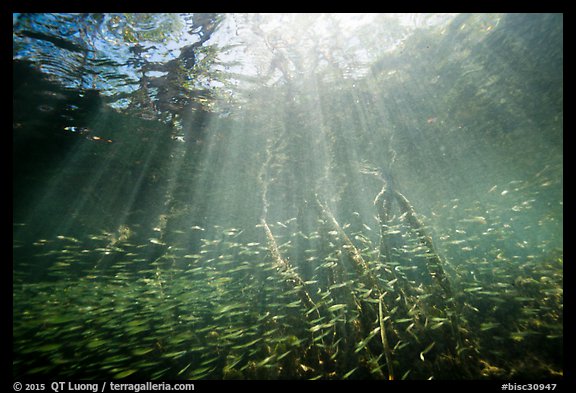
Besides dense schools of juvenile fish, I was surprised to spot the largest angelfish I’ve ever seen below the root system of the mangroves.
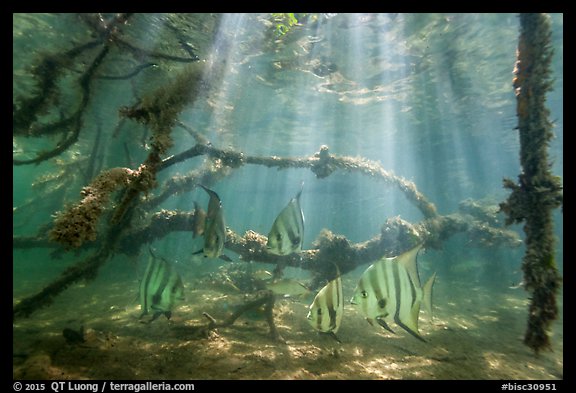
When taking the underwater photos, I made the mistake of not using a close-up diopter filter on the lens because I was thinking mostly about the split above/under water images. The filter is used when shooting with a dome. Without the filter, the above water part is sharper, but the under water part is less sharp. As I ended up photographing mostly under water, those images lacked sharpness despite stopping down to f/22.

Instead of making the images available at full size, I reduced the pixel dimensions to 2,000 wide. I went back to Biscayne NP, at Convoy Point, to photograph more underwater images in the mangroves, but, predictably, the water wasn’t as clear. That was a tough lesson learned during a photo opportunity difficult to reproduce, but on the positive side it gives me a reason to try and come back…
More images: Boca Chita Key, Southern Keys, Underwater mangroves.

